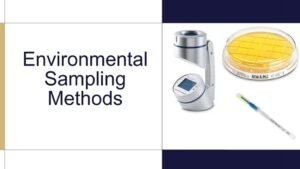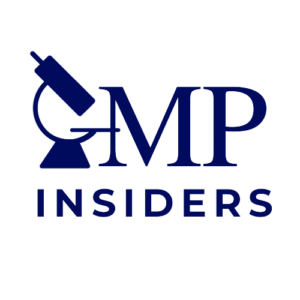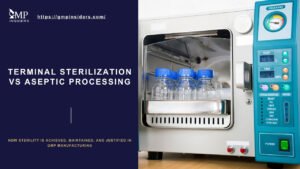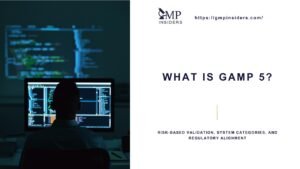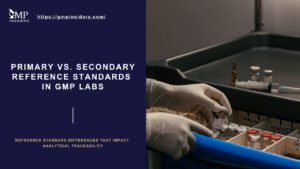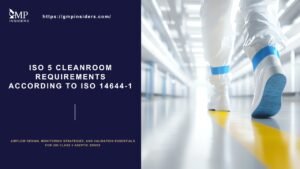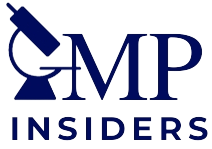The supplier qualification process is to confirm that suppliers, contractors, and service providers can consistently meet quality, regulatory, and operational requirements. The process reduces variability, supports compliance, and mitigates risks associated with raw materials, components, and outsourced services.
This article outlines the key considerations pharmaceutical companies should consider when establishing or enhancing their supplier qualification procedures, ranging from regulatory expectations to practical risk assessments and ongoing monitoring.
What is Supplier Qualification?
Supplier qualification is a formal, documented process used to assess and approve external parties that provide materials, components, equipment, or services used in GMP-regulated activities. The purpose is to ensure that each supplier is capable of consistently meeting quality, safety, and regulatory expectations.
The supplier qualification process begins with defining clear acceptance criteria based on the intended use of the material or service. This includes evaluating quality standards, regulatory compliance, operational capabilities, and risk factors.
The initial qualification phase typically involves gathering documentation, reviewing past performance, and conducting supplier qualification audits when necessary. The depth of the evaluation depends on the criticality of the supplied material or service and the associated risk to product quality and patient safety.
Supplier qualification is not a one-time activity. It extends throughout the relationship and requires ongoing performance monitoring, periodic re-evaluation, and documented risk-based decisions.
The goal is to maintain control over the supply chain and ensure that any changes in supplier processes, facilities, or quality systems are identified and managed before they can impact the product.
Supplier Qualification Process
The supplier qualification process involves several structured stages designed to evaluate and approve suppliers for use in GMP-regulated pharmaceutical operations.

1. Identification of Potential Suppliers
The first step in identifying potential suppliers is to define the requirements and develop relevant questions.
Identify the Specific Needs and Criteria for Suppliers
Before evaluating suppliers, clearly define what you need them to deliver and under what conditions.
- Business Needs: Type of product or service, expected volumes, delivery schedules, and technical specifications
- Regulatory Expectations: Compliance with GMP, GDP, ISO 9001, or other applicable standards
- Quality Standards: Required quality certifications, batch consistency, defect history, and documentation practices
- Service Requirements: Lead time, flexibility, responsiveness, and technical support
- Cost Constraints: Budget limitations and expectations for cost transparency
Identify Potential Sources
Utilize targeted methods to identify suppliers that meet your defined requirements.
- Industry Directories: GMP-compliant supplier listings and validated vendor databases
- Trade Shows and Conferences: Sector-specific events where qualified vendors showcase capabilities
- Professional Networks: Referrals through QA, procurement, or industry peers
- Online Platforms: B2B marketplaces and regulatory databases with supplier filters
- Internal Database: Reassessment of past or inactive vendors that may still be qualified
Collect Preliminary Supplier Information
After identifying candidates, gather essential data to evaluate their potential.
- Company Profile: History, structure, ownership, and presence in regulated markets
- Product or Service Portfolio: Alignment with your specific technical and compliance needs
- Certifications: GMP, ISO, GDP, or other third-party audit reports
- Experience: Proven track record in pharmaceutical supply or similar regulated industries
- Initial Responsiveness: Willingness to participate in the qualification process
Only suppliers that meet the minimum expectations across these areas should proceed to the preliminary assessment stage.
2. Preliminary Assessment
The second stage of supplier qualification management is a preliminary assessment of the identified suppliers.
Initial Risk Screening
Evaluate each potential supplier against key risk categories to determine whether they warrant further assessment.
- Financial Stability: Review audited financial statements, credit ratings, and business continuity to identify any risk of insolvency
- Regulatory Compliance: Check for GMP or GDP certifications, audit history, warning letters, or non-compliance reports
- Operational Capacity: Assess production capabilities, equipment adequacy, scalability, and resource availability
- Geopolitical Risk: Consider political or environmental instability, logistics challenges, and export/import restrictions
- Legal and Ethical Risk: Review labor practices, anti-corruption policies, environmental compliance, and any litigation history
Develop Supplier Qualification Criteria
Establish a set of objective criteria to assess all suppliers consistently.
- Quality: Product consistency, defect rates, deviation handling, and QA systems
- Compliance: Document control, regulatory inspection outcomes, and traceability
- Cost: Total cost of ownership, including unit price, delivery charges, and value-added services
- Delivery: Lead time accuracy, capacity to meet urgent demands, and historical delivery reliability
- Service: Customer support availability, issue resolution process, and after-sales responsiveness
Apply Weighting and Scoring System
Assign importance to each criterion based on business priorities and risk exposure.
- Weighting: For example, quality and compliance may carry higher weight than cost in GMP-critical operations
- Scoring: Use a defined scale (e.g., 1 to 5) to score suppliers for each criterion based on available evidence
- Documentation: Maintain consistent records of all evaluations, notes, and preliminary scores
Shortlist and Organize Candidates
Finalize a group of qualified suppliers to move forward with a detailed assessment.
- Shortlisting: Select suppliers with acceptable risk profiles and high scores in core categories
- Internal Alignment: Involve key stakeholders from QA, procurement, and regulatory to review the shortlisted vendors
- Supplier Database: Create or update a centralized record for tracking all pre-qualified and pending suppliers
Supplier Qualification Questionnaire
One of the most commonly used tools during the qualification process is the supplier qualification questionnaire. This document allows you to collect structured information on the supplier’s capabilities, compliance status, and quality system. It is beneficial during the preliminary and detailed assessment phases.
3. Detailed Assessment for Supplier Qualification
The third part involves a detailed assessment of the suppliers, which includes a supplier qualification audit, technical quality agreements, and a risk assessment of the suppliers.
Conduct Supplier Qualification Audits
Perform audits to verify the supplier’s compliance with GMP and your internal requirements.
- Audit Team: Assign qualified auditors familiar with GMP and pharmaceutical operations
- Audit Planning: Prepare a scope covering manufacturing processes, quality systems, data integrity, and documentation
- On-Site or Remote Audits: Choose the audit format based on risk level, supplier type, and regulatory importance
- Facility Inspection: Evaluate cleanliness, layout, segregation, equipment maintenance, and material flow
- Documentation Review: Check SOPs, batch records, deviations, change controls, and training files
- Audit Report: Document findings, classify observations by criticality, and issue corrective actions if required
Establish a Quality Technical Agreement (QTA)
Define expectations and responsibilities between both parties through a formal agreement.
- Defined Roles: Clarify responsibilities for manufacturing, testing, quality assurance, and documentation
- Acceptance Criteria: Set specifications, sampling plans, release conditions, and test methods
- Change Management: Describe procedures for handling changes in process, GMP materials, or equipment
- Audit Rights and Reviews: Include provisions for routine audits and periodic quality reviews
- Escalation and Communication: Define contact points, notification timelines, and dispute resolution
- Approval and Control: Ensure both parties sign the QTA and maintain version-controlled records
Perform Supplier Risk Assessment
Evaluate all collected data to determine the supplier’s overall risk profile.
- Financial Risk: Reassess financial stability in the context of long-term viability and capacity to scale
- Operational Risk: Identify gaps in capability, capacity limitations, or dependencies on sub-suppliers
- Compliance Risk: Rate the likelihood of regulatory issues based on audit outcomes and documentation practices
- Supply Chain Vulnerabilities: Analyze delivery timelines, logistics challenges, and alternate sourcing options
- Risk Categorization: Assign a risk level (e.g., high, medium, low) based on standardized criteria
- Documentation: Maintain detailed records of the risk assessment and the rationale for categorization
The supplier qualification criteria used during this phase must align with GMP expectations, the criticality of the supplied materials or services, and your internal quality standards.
4. Supplier Selection Stage
After thoroughly evaluating the candidates, the next step is to proceed to the supplier selection stage. This stage ensures that the final decision is made with a complete understanding of the risks and mitigation strategies associated with each supplier.
Conduct Final Risk Assessment
Before finalizing supplier approval, consolidate all findings to confirm that the supplier meets compliance and quality expectations.
- Risk Consolidation: Combine audit results, risk scores, performance data, and business impact
- Gap Analysis: Identify unresolved issues or conditions that must be addressed before approval
- Criticality Check: Reconfirm the supplier’s impact on product quality, regulatory compliance, and patient safety
- Approval Readiness: Verify that documentation is complete, CAPAs are implemented (if applicable), and all stakeholders are informed
SEE ALSO: Quality Risk Management in Pharmaceutical Industry
Review Risk Mitigation Plans
Evaluate whether the supplier has adequate controls to manage current and future risks.
- Business Continuity Plans: Confirm the existence of tested procedures for disaster recovery or supply disruption
- Contingency Strategies: Assess alternative sourcing arrangements, backup manufacturing, and inventory buffers
- Ongoing Improvement Programs: Review initiatives for quality enhancement, process optimization, and staff training
- Corrective Action Tracking: Ensure all audit-related or previously reported issues are closed and verified
Prepare and Approve Risk Assessment Report
Finalize the documentation needed to support the decision and obtain formal approval.
- Summary of Risks: Present all identified risks with relevant scores, comments, and categorizations
- Mitigation Documentation: Include details of the supplier’s preventive and corrective measures
- Stakeholder Review: Submit the report to QA, procurement, regulatory affairs, and senior management
- Formal Approval: Obtain documented approval to onboard the supplier into the qualified vendor list
Once approved, the supplier can proceed to onboarding and integration into the GMP supply chain.
5. Onboarding and Integration Into the Supply Chain
Once a supplier is selected, the next step is to onboard and integrate them into your supply chain. This stage ensures a smooth transition and helps establish a strong working relationship. A key component of this stage is ongoing risk monitoring to ensure continuous compliance and performance.
Monitor Initial Supplier Performance
After approval, early-stage performance monitoring ensures that the supplier meets expectations under real operating conditions.
- Performance Metrics: Track delivery timelines, order accuracy, product quality, and documentation completeness
- Deviation Monitoring: Identify any early deviations or non-conformances and assess root causes
- KPI Benchmarking: Compare performance against pre-defined benchmarks or SLAs
- Reporting Frequency: Establish regular reporting intervals for initial supply batches or services
Provide Supplier Training and Support
Clear communication and orientation help align the supplier with your internal standards and expectations.
- Risk Management Orientation: Introduce your policies on deviation handling, change control, CAPA, and audit readiness
- Documentation Standards: Guide batch documentation, certificates of analysis, and electronic data formats
- Point of Contact: Assign a responsible person from QA or procurement for ongoing communication and escalation
- Best Practice Sharing: Offer case examples or joint workshops to encourage continuous alignment
Supplier Qualification and Continuous Monitoring Framework
Embed the supplier into your quality system to ensure long-term control and traceability.
- QMS Integration: Add the supplier to approved vendor lists and link them to internal systems (e.g., ERP, QMS)
- Ongoing Evaluation Plan: Schedule routine evaluations based on risk profile, including audits and KPI reviews
- Feedback Loop: Set up structured review meetings to share observations and agree on improvements
- Escalation Procedure: Define steps to follow in case of repeated failures or non-conformances
This phase ensures that supplier integration is not only operational but also fully aligned with GMP expectations and long-term quality objectives.
6. Performance Monitoring and Re-Qualification
After the supplier has been onboarded and integrated into your supply chain, ongoing performance monitoring is essential to maintain quality and compliance.
Conduct Ongoing Performance Reviews
Routine performance reviews help ensure that the supplier continues to meet GMP standards and operational expectations.
- KPI Tracking: Monitor key indicators such as on-time delivery, defect rates, response times, and audit readiness
- Data Analysis: Review trends in quality metrics, deviations, and customer complaints linked to the supplier
- Issue Resolution: Verify that any non-conformances are addressed promptly through CAPA processes
- Review Frequency: Set evaluation intervals based on supplier criticality and risk classification
Maintain Feedback and Communication Channels
Transparent communication supports early issue detection and promotes continuous improvement.
- Scheduled Meetings: Hold regular review meetings with the supplier to discuss performance and expectations
- Two-Way Feedback: Encourage mutual sharing of concerns, improvement ideas, and lessons learned
- Improvement Plans: Where needed, agree on documented action plans to resolve deficiencies or enhance capabilities
- Stakeholder Involvement: Keep QA, procurement, and technical teams aligned on supplier performance status
Re-Assess Supplier Risk Profile
Requalification ensures that supplier status remains valid over time, especially after changes or adverse events.
- Re-Qualification Audits: Conduct periodic or trigger-based audits to reassess compliance and system effectiveness
- Risk Profile Update: Adjust the supplier’s risk rating based on new data, incidents, or changes in scope
- Compliance Checks: Confirm ongoing adherence to regulatory requirements, license renewals, and QTA obligations
- Approval Maintenance: Reconfirm the supplier’s qualified status or initiate delisting if requirements are no longer met
Regular monitoring and requalification maintain supplier reliability and reduce the risk of supply chain disruption or regulatory non-compliance.
7. Supplier Discontinuation
Supplier discontinuation is crucial in maintaining the integrity and compliance of the pharmaceutical supply chain under Good Manufacturing Practice (GMP) guidelines. Some of the key aspects and reasons for supplier discontinuation include:
Define Justifiable Reasons for Discontinuation
Discontinuing a supplier must be based on documented evidence and risk to product quality, compliance, or supply reliability.
- Persistent Non-Compliance: Repeated failure to meet GMP standards or regulatory obligations
- Frequent Quality Issues: High defect rates, contamination risks, or unresolved deviations
- Regulatory Violations: Findings from inspections or audits indicating significant compliance gaps
- Supply Chain Instability: Inconsistent deliveries, financial distress, or failure to meet service commitments
- Ethical or Legal Risks: Labor violations, environmental non-compliance, or unethical business conduct
Evaluate and Document Performance Failures
A traceable evaluation must support the decision to discontinue a supplier.
- Audit and Performance Records: Analyze audit findings, CAPA history, KPI trends, and past escalations
- Impact Assessment: Evaluate the potential risk to product quality, patient safety, and regulatory standing
- Supplier Response: Review any corrective actions proposed or implemented by the supplier
- Decision Justification: Compile a formal report outlining the rationale for discontinuation
Manage Transition and Communication
Discontinuation should be handled in a controlled manner to avoid operational disruption.
- Supplier Notification: Inform the supplier in writing, clearly stating the reasons and the effective date
- Internal Communication: Notify all relevant departments (QA, procurement, regulatory, production)
- Transition Planning: Qualify an alternative supplier, ensure continuity of supply, and transfer applicable documentation
- Record Closure: Update supplier status in all internal systems, remove from approved vendor lists, and retain documentation for inspection readiness
A structured discontinuation process ensures transparency, traceability, and uninterrupted compliance with GMP and regulatory obligations.
Products and Services Covered in GMP Supplier Qualification Process
Supplier qualification under GMP applies not only to physical materials but also to services that impact product quality, regulatory compliance, and patient safety. The scope should reflect the criticality of each input or service to the manufacturing process and product lifecycle.
Products
Supplier qualification procedures must cover the following product categories:

- Active Pharmaceutical Ingredients (APIs): Must comply with GMP and pharmacopoeial standards. Requires audit verification, full traceability, and complete documentation.
- Excipients: Require evaluation of origin, consistency, and quality. Some may also require GMP certification depending on their function.
- Packaging Materials
- Primary Packaging: In direct contact with the product; requires material compatibility, safety assessment, and traceability.
- Secondary Packaging: Requires accurate labeling, stability under storage conditions, and compliance with transportation requirements.
SEE ALSO: Primary vs Secondary Packaging in Pharmaceutical Industry
- Raw GMP Materials: Includes solvents, reagents, and intermediates. Must be evaluated for purity, consistency, contamination risk, and handling requirements.
- Laboratory Supplies: Reagents and consumables used in testing must be verified for suitability, lot-to-lot consistency, and traceability of documentation.
- Manufacturing Equipment: Requires qualification documents, user manuals, service records, and compliance with technical and GMP standards.
- Analytical Instrumentation: Must undergo IQ/OQ/PQ and be maintained/calibrated according to GMP. The supplier must provide documentation and demonstrate service capability.
- Computerized Systems: Systems supporting GMP operations (e.g., LIMS, QMS, MES) must be validated. The supplier must support data integrity and system lifecycle compliance.
Services
The following service providers should be qualified under the GMP framework based on their impact on quality or compliance:

- Contract Manufacturing Organizations (CMOs): Require full GMP audits, QTA, and performance oversight. Must demonstrate control over manufacturing and batch release processes.
- Contract Research Organizations (CROs): Must comply with GLP and GCP as applicable. Qualification focuses on data integrity, study documentation, and regulatory alignment.
- QC Testing Laboratories: External labs must be qualified through supplier qualification audits, method validation verification, and quality system review.
- Calibration and Maintenance Services: Providers must demonstrate traceability to national standards and provide certificates, schedules, and procedures for handling deviations.
- Compliance Consultants: Qualification involves reviewing credentials, experience, project documentation quality, and regulatory knowledge.
- Logistics Providers: Must comply with GDP. Qualification includes transport validation, temperature control verification, and audit readiness.
- Waste Management Services: Must follow applicable environmental and pharmaceutical waste regulations. Requires permits, SOPs, and traceability documentation.
A documented risk-based approach should determine the depth of qualification for each product or service category.
Key Performance Indicators (KPIs) for Supplier Qualification
Monitoring and evaluating suppliers through Key Performance Indicators (KPIs) is essential for maintaining high standards of quality, compliance, and performance in the pharmaceutical industry. Here are critical KPIs to consider for GMP supplier qualification:

Quality KPIs
- Defect Rate: The percentage of products received that do not meet quality standards.
Target: Aim for a defect rate as close to zero as possible.
- Compliance Rate: The percentage of shipments that meet all regulatory and GMP requirements.
Target: 100% compliance with all regulatory standards.
- Supplier Qualification Audit Findings: The number and severity of issues identified during supplier audits.
Target: Minimal and low-severity findings, with swift corrective action taken on any issues identified.
- Corrective and Preventive Actions (CAPA) Closure Rate: The rate at which identified quality issues are addressed and resolved.
Target: 100% closure of CAPA items within the agreed timeframe.
Delivery KPIs
- On-Time Delivery Rate: The percentage of orders delivered on or before the agreed delivery date.
Target: 95% or higher on-time delivery rate.
- Lead Time: The time taken from placing an order to receiving the delivery.
Target: Consistent adherence to the agreed lead times.
- Order Fulfillment Accuracy: The percentage of orders delivered without errors (correct quantity, item, and specifications).
Target: 99% or higher order fulfillment accuracy.
Financial KPIs
- Cost Variance: The difference between the agreed cost and the actual cost incurred.
Target: Minimal variance, indicating reliable cost predictability.
- Cost of Poor Quality (CoPQ): Costs associated with defects, rework, and returns.
Target: Reduce CoPQ over time through continuous quality improvement initiatives.
Compliance and Regulatory KPIs
- Regulatory Inspection Outcomes: Results of regulatory inspections related to supplier products or services.
Target: Favorable outcomes with no critical observations.
- Document Compliance Rate: The percentage of supplier documentation that meets regulatory and GMP requirements.
Target: 100% compliance with documentation standards.
Performance KPIs
- Supplier Responsiveness: The average time the supplier takes to respond to queries, issues, or requests.
Target: High responsiveness, ideally within 24 hours.
- Innovation and Improvement Initiatives: The number and impact of initiatives proposed and implemented by the supplier to improve quality, reduce costs, or enhance efficiency.
Target: Regular and impactful contributions to continuous improvement.
- Customer Satisfaction: The level of satisfaction of internal stakeholders (e.g., procurement, quality assurance) with the supplier’s performance.
Target: High satisfaction scores, typically 8 out of 10 or higher.
By monitoring these KPIs, pharmaceutical companies can ensure that their suppliers maintain high standards of quality, compliance, and performance, supporting the overall integrity and efficiency of the supply chain.
| KPI Category | Metric | Target |
|---|---|---|
| Quality | Defect rate | < 0.5% |
| Delivery | On-time delivery rate | > 95% |
| Compliance | Audit observation resolution | 100% within 30 days |
| Service | Responsiveness (queries, CAPAs) | Within 24 hours |
| Financial | Cost variance | < ±5% |
Risk-Based Monitoring Strategies in Vendor Qualification
Supplier oversight should be aligned with the risk each vendor poses to product quality, patient safety, and regulatory compliance. This is a key part of supplier qualification management and must be embedded within your overall supplier qualification program to ensure long-term control and compliance.
Risk Categories
Suppliers should be categorized into three main groups based on a documented risk assessment:
- High-Risk Suppliers (Quality-Critical): Direct impact on product quality or patient safety, such as API manufacturers, sterile packaging suppliers, or CMOs. Require full audits, frequent requalification, and active performance monitoring.
- Medium-Risk Suppliers: These suppliers have an indirect influence on product quality, such as secondary packaging vendors or calibration service providers. Require periodic audits, regular performance reviews, and controlled documentation processes.
- Low-Risk Suppliers: Minimal influence on quality, such as stationery providers or general consumables. Require basic qualification through questionnaires and annual performance checks.
| Risk Level | Qualification Method | Monitoring Tools |
|---|---|---|
| High | On-site audits, QTA, full review | Monthly KPIs, change control review |
| Medium | Remote audit, partial QTA | Quarterly performance metrics |
| Low | Questionnaire, approval checklist | Annual review, complaint tracking |
Steps to Create a Supplier Qualification Checklist
Developing a supplier qualification checklist is a critical part of the overall supplier qualification procedure. It ensures that essential elements, such as compliance status, risk classification, operational capabilities, and documentation, are systematically reviewed.
A well-structured checklist promotes consistency across evaluations and supports supplier qualification audits by providing a clear framework for assessment.
A comprehensive supplier qualification checklist should include the following items:
- Verify regulatory certifications (e.g., GMP, GDP, ISO 9001)
- Review audit history and outcomes from inspections
- Assess manufacturing capacity and technical capabilities
- Evaluate quality systems and procedures for deviation and CAPA management
- Check documentation practices, including traceability and record control
- Confirm change control and risk management procedures
- Review testing capabilities or service scope, where applicable
- Assess supplier responsiveness, communication, and escalation pathways
The checklist should be tailored to the risk level and criticality of the supplier to ensure relevance and effectiveness in the qualification process.
Supplier Qualification Guidelines
Requirements for supplier qualification ensure that vendors meet regulatory, quality, and operational standards before they are approved for procurement. The key expectations from global frameworks are outlined below.
Regulatory Compliance and General Expectations
Suppliers must comply with applicable regulations based on their role in the life sciences industry.
- Pharmaceutical suppliers: ICH Q7, EU GMP, FDA 21 CFR Part 211
- Medical device suppliers: ISO 13485 and 21 CFR Part 820
- Logistics and storage providers: Good Distribution Practices (GDP)
- Suppliers must demonstrate regulatory compliance and hold valid certifications
EU Directives (2001/83/EC Articles 8 and 46)
Directive 2001/83/EC outlines the legal requirements for controlling active substances used in medicinal products.
Article 8 requires the applicant for marketing authorization to confirm that the manufacturer of the active substance complies with GMP. This compliance must be verified through supplier qualification audits, and the findings must be available upon request from the authorities.
Article 46 further emphasizes that only active substances manufactured following GMP and distributed following GDP should be used. These provisions underscore the legal requirement for pharmaceutical companies to establish and maintain a robust supplier qualification system.
EudraLex Volume 4
- Outsourced Activities (EU GMP Chapter 7): Formal qualification, including audits and monitoring
- Starting Materials (Chapter 5): Verify quality and origin using risk-based assessments
- Supplier Audits (Chapter 5 / Annex 15): Conduct regular, risk-based evaluations
- Quality Agreements (Chapter 7): Define roles, testing requirements, and compliance obligations
- Performance Monitoring (Chapter 8): Monitor deviations and resolve compliance issues
GDP Supplier Qualification Requirements
- Supplier Selection (EU GDP Chapter 5.2): Assess the ability to meet GDP, including transport and storage conditions
- Monitoring (Chapter 6.3): Implement periodic requalification and deviation tracking
- Quality Agreements (Chapter 7.1): Define GDP roles, compliance expectations, and risk protocols
- Cold Chain (Chapter 9.2): Require validated temperature control systems
USP <1083> Lifecycle Approach
USP General Chapter <1083> provides a detailed framework for supplier qualification, utilizing a lifecycle-based risk management approach. It defines four main phases: supplier selection, initial qualification, performance monitoring, and requalification.
The chapter encourages companies to tailor the qualification approach based on the risk associated with the supplied material or service. It also emphasizes the importance of thorough documentation, ongoing supplier oversight, and the use of quality agreements where necessary.
The goal is to maintain supply chain reliability while supporting regulatory compliance and patient safety.
FDA Supplier Qualification Requirements
- Selection and Evaluation (21 CFR 820.50 / 211.84): Use documented procedures and risk-based audits
- Quality Agreements (820.50(b) / 211.84(d)(2)): Define responsibilities and material specifications
- Component Testing (211.110 / 820.80): Require incoming testing and verification
- Change Notification (211.100(a) / 820.30(i)): Require disclosure and approval of changes
- Ongoing Monitoring (211.180(e) / 820.70): Track performance and maintain compliance
ISO 13485 Supplier Qualification Requirements
- Supplier Evaluation (Clause 7.4.1): Use documented assessment procedures
- Risk Management (Clause 7.1 & 7.4.1): Tailor controls based on impact on device quality
- Quality Agreements (Clause 4.1.5 & 7.4.3): Define outsourced process controls
- Performance Monitoring (Clause 7.4.1 & 8.4): Re-evaluate based on metrics and audits
- Nonconforming Product (Clause 8.3): Establish corrective action procedures
- Change Notification (Clause 7.4.2): Require disclosure and assessment of changes
- Traceability (Clause 4.2.4 & 7.5.9.2): Maintain complete records for critical suppliers
FAQ: Vendor Qualification in Pharmaceutical Industry
What Happens if a Supplier Refuses to Participate in an Audit?
If a supplier refuses an audit and they are classified as medium- or high-risk, this is considered a significant red flag. Lack of transparency may indicate potential compliance issues or a reluctance to share quality-related information.
In such cases, alternative risk controls, such as requesting recent third-party audit reports or certifications, might be considered, but often with limitations. Ultimately, the organization must assess whether the supplier can still be approved or if disqualification is necessary. Risk acceptance must be formally documented if proceeding without an audit.
Can Digital Tools Be Used to Manage Supplier Qualification?
Yes, digital tools such as supplier management software or electronic Quality Management Systems (eQMS) can streamline the qualification process. They help automate document control, audit scheduling, supplier scoring, and real-time performance monitoring.
These tools also ensure traceability and compliance with data integrity requirements. For companies managing a large supplier base, digital solutions improve efficiency and reduce human error. Integration with ERP systems can further enhance supply chain visibility.
Is It Necessary to Qualify Suppliers for Printed Packaging Materials?
Yes, printed packaging materials such as labels and cartons must be sourced from qualified suppliers, especially in the pharmaceutical industry. Errors in printed text, batch numbers, or expiry dates can lead to severe consequences, such as product recalls or regulatory non-compliance.
GMP supplier qualification should include print proof checks, change control for artwork, and a robust traceability system. Regulatory agencies often inspect the control of printed components and determine who is responsible for approving their content.
Final Thoughts
Supplier qualification plays a crucial role in ensuring product quality and maintaining regulatory compliance in the pharmaceutical manufacturing industry. It is not just a procedure, but a long-term strategy that supports reliable sourcing, minimizes risks, and strengthens supply chain integrity.
When executed with a risk-based mindset, it enables better decision-making and improves operational resilience. Each step, from initial assessment to ongoing monitoring, should be documented, justified, and aligned with regulatory expectations. A well-defined qualification process ultimately protects both the product and the patient.






